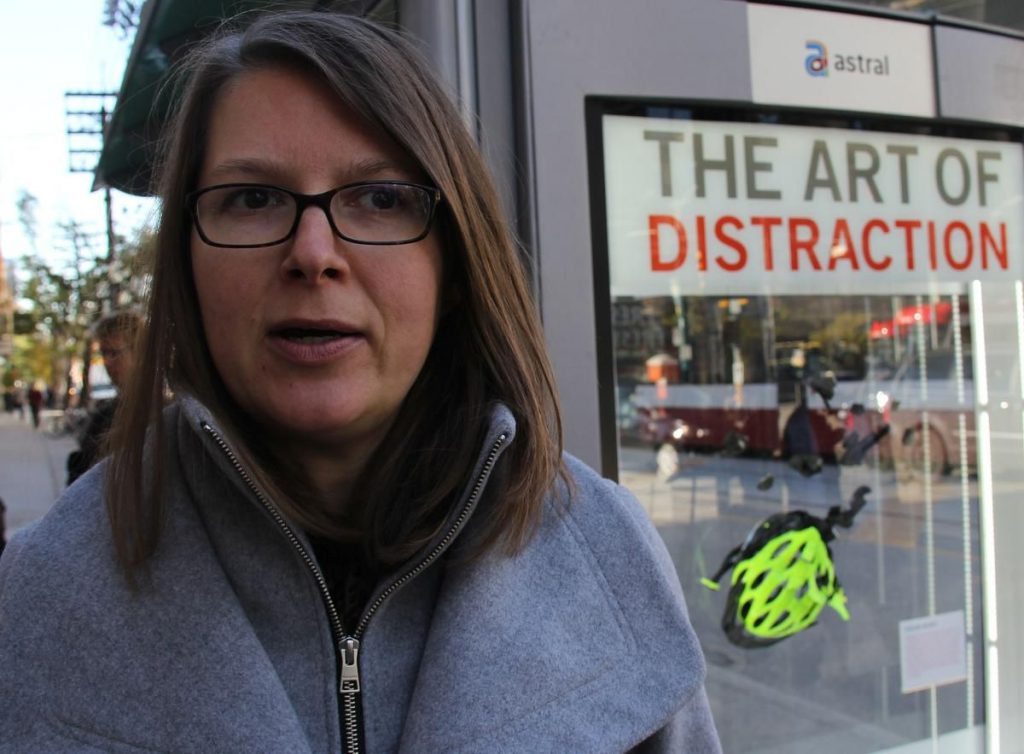Random objects of daily life can be powerful things; that’s why museums use them to help people understand and better connect to those who lived long ago.
Now, the City of Toronto is hoping to use artifacts to similar effect for lives recently lived — and lost — on city streets.

Kasia Briegmann-Samson, whose husband was struck and killed while riding his bike, stands beside a display warning motorists about the dangers of distracted driving. (DAVID RIDER)
It’s Edouard Le Blanc’s shattered bike helmet after a driver running a red light hit him so hard that his organs were unfit for transplant, leaving his family unable to honour his wishes to donate.
It’s the purple school supplies spilling out of 14-year-old Violet’s backpack when she was struck and killed in a crosswalk on her first day of Grade 10.
It’s Tom Samson’s wallet, keys and wedding ring that were handed to his widow in a paper bag by the police on the day he was fatally struck riding his bike.
This campaign created in partnership with the advocacy group Friends and Families for Safe Streets, is trying to make distracted driving as socially unacceptable as drunk driving. And rightly so.
To be sure, an advertising campaign is certainly not all that’s needed to make Toronto’s streets safer for pedestrians and cyclists. But every possible approach is needed because the trends are going the wrong way.
Two years into Toronto’s Vision Zero initiative designed to reduce traffic deaths to zero by 2021, the numbers are still rising. There have already been at least 38 pedestrian and cyclist deaths in Toronto this year — putting the city on pace for its deadliest year on record. And we’re just now entering the time of year where changing weather patterns and reduced daylight typically result in a spike in collisions.
Toronto must speed up its plans to redesign roads, narrow lanes to slow down traffic, increase pedestrian crossings and bicycle lanes and other key Vision Zero road safety projects.
But the attitudes and behaviours of road users must also change and this education campaign to highlight the deadly and tragic consequences can help with that. The city and its drivers have a long way to go to make traffic fatalities, and these types of artifact displays, a part of history.
Source: The Toronto Star
